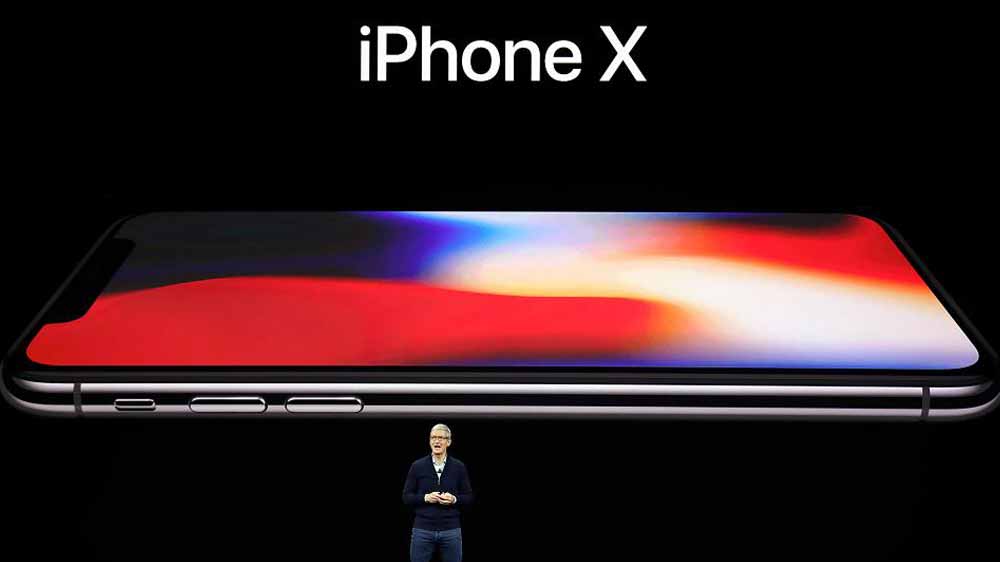
While the exaggerated news of Apple’s impending demise is always in circulation, the last year or two have been especially hard for folks at Cupertino.
Apple’s half-priced competitors have inched forward with time to close the performance gap (offering better performance in some cases). Innovation has also been moot since the last couple of years, with its products looking monotonous and iterative. The fact that the last three iPhones are difficult to tell apart hasn’t helped the scenario either.
The answer to all of that is the new iPhone X, the company’s third smartphone unveiled with the conventional iPhone 8 and 8 Plus. Its fitting that Apple saved the “one more thing” tagline for it on a momentous evening (it doesn’t seem to get old). For those of you confused, it is pronounced “ten” rather than “ex”.
The past one year has seen the acceptable flagship design change remarkably, and Apple has anticipated its big move to perfection, taking on one of the iPhone’s biggest criticisms by removing the bezel altogether.
The 5.8″ Super Retina OLED display comes with 2436 x 1125 resolution (458 ppi) which is a fancy way of saying that its a Full HD+ display. It supports HDR 10 and Dolby Vision, as well as True Tone for custom display contrast. It comes with an Essential-esque bar at the top of the phone with the camera and Face ID.
The design of the iPhone X consists of reinforced glass on the front and back with stainless steel sides. Dust and water resistance is also included.
iOS 11 has been customized to support swipes for controls now that the home button is gone. For example, a bottom-up swipe brings up the home page, while swiping down from top-right brings the control center. How well it works in real life remains to be seen. Siri comes up with voice command or the side-button.
There’s also the small matter of Touch ID, which has been substituted with Face ID, Apple’s solution to facial recognition.
It supports Apple Pay and other apps which have used Touch ID till now.
The processor here is the same A11 Bionic as similar to the iPhone 8. It features six cores, including two performance cores bringing a 25% boost over the A10, as well as four low power cores that are 70% faster than last year’s processor. It has 3 GB RAM while the storage options range from 64 GB and 256 GB with no 128 GB model.
A11 Bionic is powered by a neural engine which enhances machine learning and real-time processing.
The front Face ID supporting camera features 7 MP resolution with a depth-of-field effect. The rear-setup closely resembles that of the iPhone 8 Plus, with its dual 12 MP cameras with wide-angle f/1.8 and telephoto f/2.4 apertures.
It is accompanied with a quad LED True Tone flash as well as a new image signal processor for faster autofocus and HDR. The flash supports Slow Sync with a more uniformly-lit background. Both of the lenses on the back feature optical image stabilization, which is a first for the iPhone. Portrait Lighting brings studio lighting effects to both front and rear-camera photos.
The TrueDepth sensor recognizes almost 50 muscle movements, piecing together data to form a new kind of emojis called “Animoji”.
The sensor can also be used to create AR content easily, while the viewing has also been made easier with the new accelerometer and gyroscope sensors. Battery life should last around 2 hours more than its predecessor the iPhone 7.
Obviously, the iPhone X supports wireless charging and all the new accessories announced today. If you want to know about all the Apple mobiles, here’s a list of the latest Apple mobiles price in Pakistan and their specs.
The iPhone X is the first iPhone which starts at $999, which we had long expected. This is for the 64 GB model while the 256 GB model goes for $1,149. This is the highest starting price ever for an iPhone or any other mainstream smartphone released to date.
It will be available in late October, which could make upgrade plans tough for folks moving up to the iPhone 8/8 Plus.